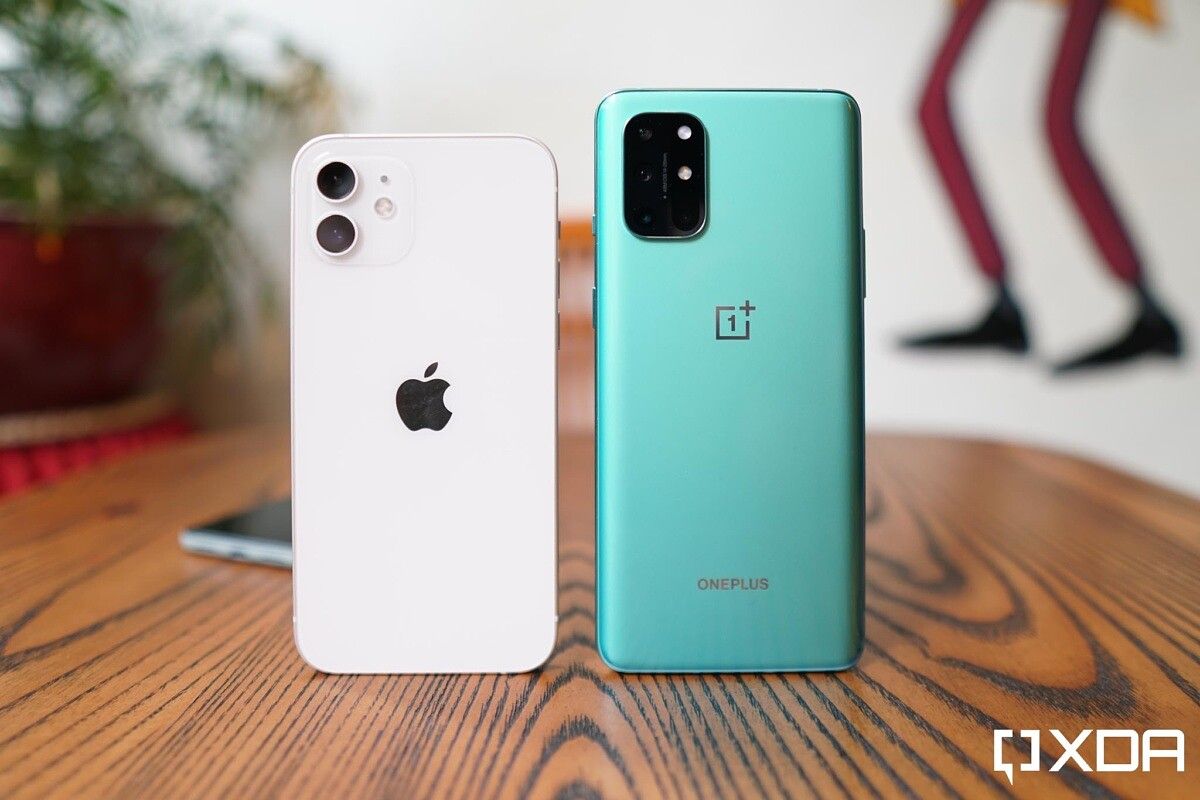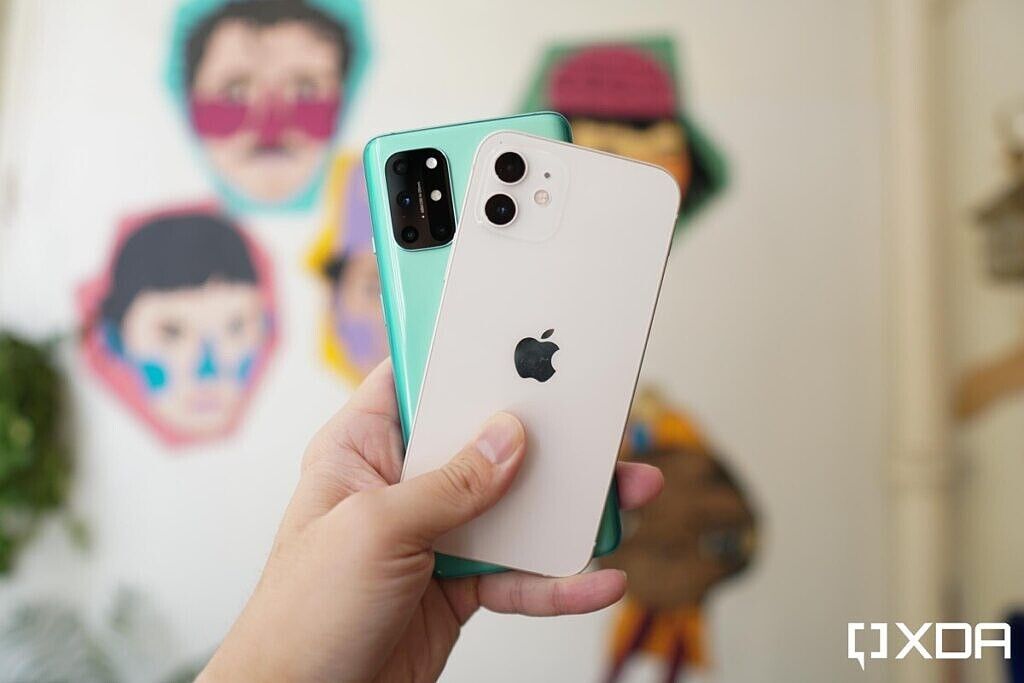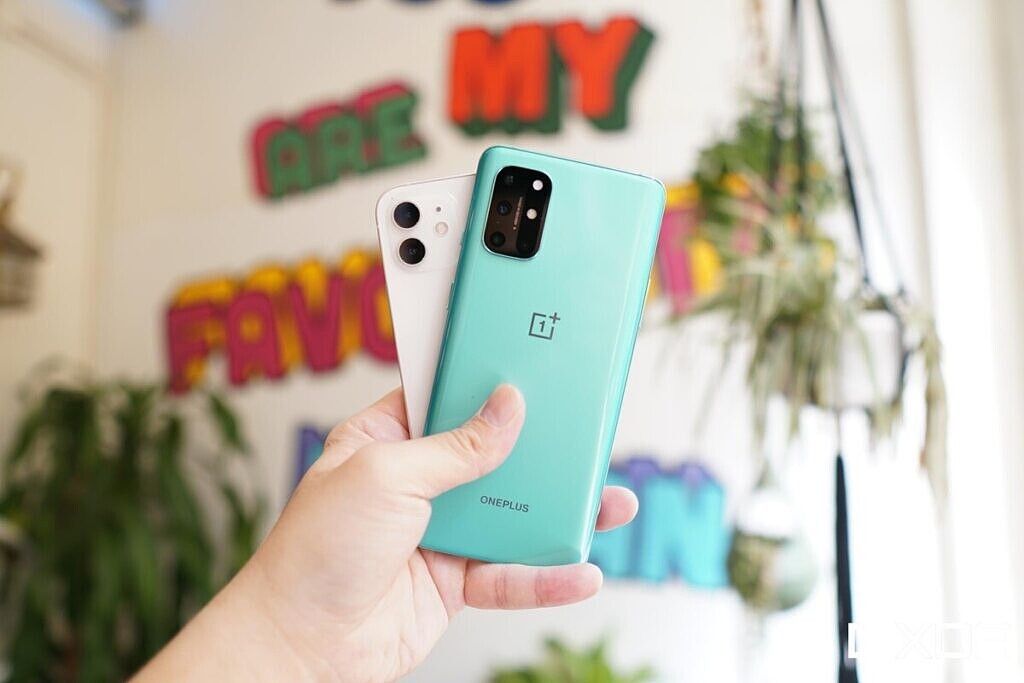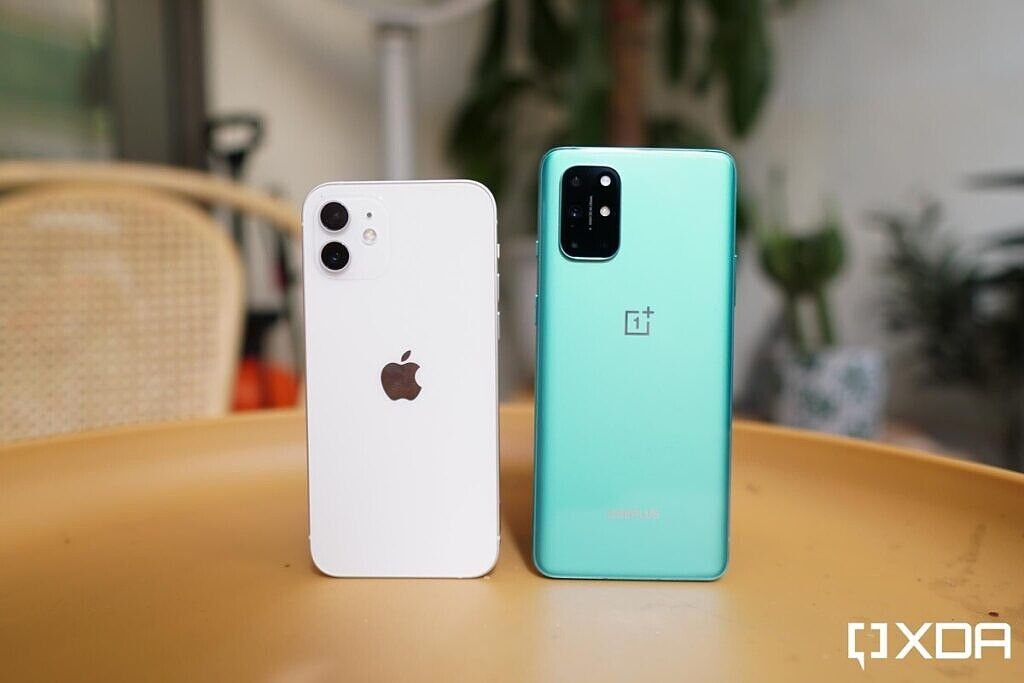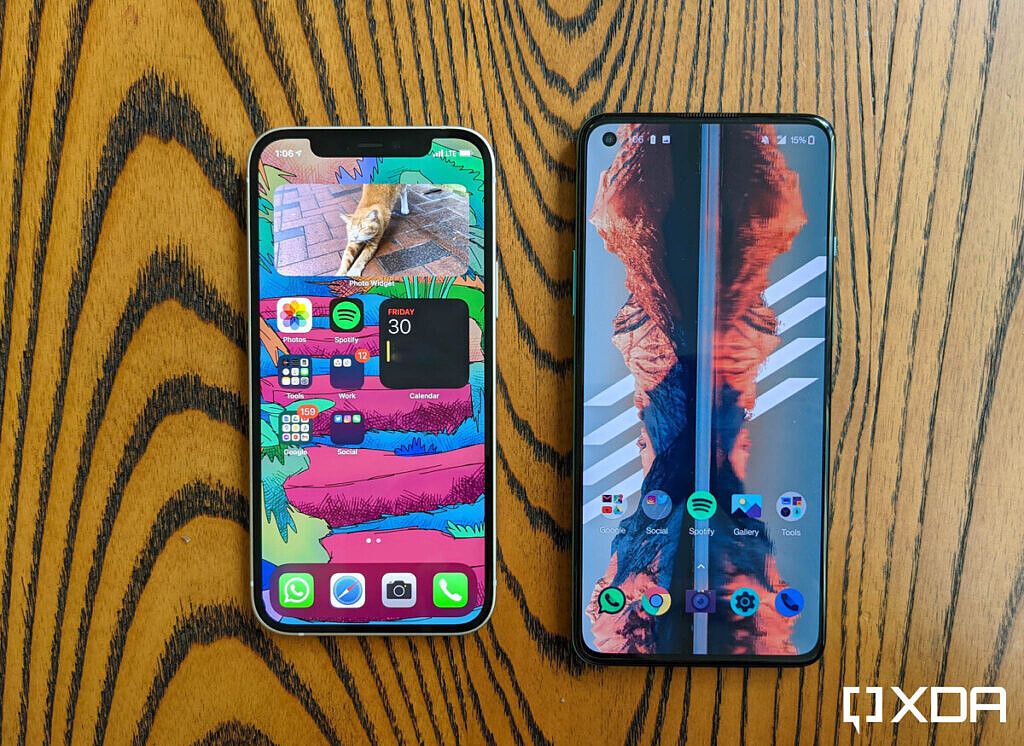Ever since Apple announced the iPhone 12, tech writers — including yours truly — have been busy comparing it against the Samsung Galaxy S20 FE and Google Pixel 5. They're the obvious comparisons — since Samsung and Google are respectively Apple's biggest rivals in hardware and software. But what if I told you the OnePlus 8T is an even more apt comparison against the iPhone 12? It's closer in price to the iPhone 12 than the Galaxy S20 FE or Pixel 5, and unlike the Pixel 5's mid-tier SoC or the Galaxy S20 FE's plasticky build, the OnePlus 8T doesn't have any noticeable hardware compromise that gives Apple an instant landslide win in that category.
Let's see how these two phones stack up against one another.
Apple iPhone 12 vs OnePlus 8T: Specification Comparison
|
Specifications |
Apple iPhone 12 |
OnePlus 8T |
|---|---|---|
|
Build |
|
|
|
Dimensions & Weight |
|
|
|
Display |
|
|
|
SoC |
|
|
|
Storage Options |
|
|
|
Battery & Charging |
|
|
|
Security |
Face ID (TrueDepth camera for facial recognition) |
In-Display fingerprint scanner |
|
Rear Camera(s) |
|
|
|
Front Camera(s) |
12MP, f/2.2 |
16MP, f/2.4 |
|
Port(s) |
Proprietary Lightning port |
USB-C |
|
Connectivity |
|
|
|
Software |
iOS 14 |
Android 11 |
|
Other Features |
|
|
|
Pricing |
Starts at $799 |
Starts at $749 |
OnePlus 8T XDA Forums ||| Apple iPhone 12 Series XDA Forums
Design and Build
Both the iPhone 12 and OnePlus 8T sport glass-and-aluminum sandwich designs. The OnePlus 8T is quite a bit taller, with a 6.55-inch screen to the iPhone 12's 6.1-inch. But as OnePlus is using a longer 20:9 aspect ratio compared to the iPhone 12's 19.5:9, the OnePlus 8T is only marginally wider from left-to-right. Both phones are comfy to hold with sturdy construction.
The similarities carry over to the physical buttons. Both devices have a power button, a volume rocker, and also a physical switch to quickly toggle between silent or sound on. OnePlus's slider even has a third option, for vibrate.
While smartphone looks are mostly subjective, I must say I'm partial to the iPhone 12's backside, with a striking large lens camera module, and just a single branding mark — that iconic Apple logo. OnePlus's camera module looks quite generic to my eyes, and I've always disliked that recent OnePlus phones have two branding marks on their back: a logo and the words "OnePlus."
Apple iPhone 12 vs OnePlus 8T: Display
I know I just said that whether a smartphone looks good is usually subjective, but when it comes to the screens of these two phones, I think it's safe to say the OnePlus 8T objectively looks better. Both of these OLED panels offer punchy colors and great max brightness levels, but the iPhone 12 screen has a giant notch while the OnePlus 8T only has a small hole-punch cutout. What's more, the OnePlus 8T screen refreshes at 120Hz, and it's ultra-smooth (I find OnePlus's UI better optimized for high refresh rates than, say, Samsung's or Vivo's UI). I know part of this is visual trickery — OnePlus purposely makes animations go faster to exude a feeling of speed, but OnePlus phones consistently feel faster than everything else on the market.
The iPhone's UI is fluid and well-optimized in its own right, and I've argued that iPhones running at 60Hz feel smoother than Android phones running at 60Hz. But OnePlus' entire branding and philosophy the last few years have been speed, and the 120Hz really shows itself.
Apple iPhone 12 vs OnePlus 8T: Processor (Benchmarks)
The OnePlus 8T's Snapdragon 865 is very powerful, but it loses to Apple's 5nm A14 Bionic that's powering the iPhone 12 in literally every benchmark. However, benchmarks aren't the end-all, be-all. In real life usage, it's hard to quantify where that extra Apple horsepower kicks in except handling videos. The iPhone 12 can shoot in Dolby Vision in real-time, and it also allows instant editing said clip within the native camera app. Exporting 4K videos in LumaFusion on the iPhone 12 also moves at blazing fast speeds — which no Android video editing app can match.
Still, we're reaching nitpicking territory here. The reality is if you're using your phone like a normal person, say opening Instagram, Twitter, Gmail, streaming music, and playing games, it's impossible to say one can feel the A14 Bionic's extra power. In fact, as I said in the last section, OnePlus' UI consistently feels "faster."
Software
Comparing iOS to Android is an apples and oranges affair, so it's impossible to say which OS is better. However, it is more than fair to say OnePlus' OxygenOS 11 software is far more customizable than the iPhone 12's iOS 14. From the look and shape of app icons to the color scheme of the UI, to shortcut gestures, OxygenOS just allows you to do so much more than iOS 14 if we’re just focusing on the smartphone user experience. Apple wins, obviously, if we take into account an entire ecosystem of products that seamlessly work together.
I am of the belief that OxygenOS is the best version of Android around — better than Google’s own version that runs on the Pixel — so for me, it’s a clear choice on which software I prefer.
Apple iPhone 12 vs OnePlus 8T: Camera Performance
The iPhone 12's camera sensor has a wider aperture of f/1.7 compared to last year, allowing it to take in more light. The OnePlus 8T, on the other hand, has kept the same 48MP Sony IMX586 sensor as its predecessor, the OnePlus 8. But because it is a 48MP sensor that shoots pixel binned 12MP shots, OnePlus is able to pack in more image information into a shot. And the results mostly mirror these hardware decisions. Both phone cameras are very good, with the OnePlus 8T producing sharper and cleaner shots if you really pixel peep, but the iPhone 12 tends to keep more natural colors and does a better job of bringing some light into really dark areas (like the fourth set of shots taken at the patio).
Apple iPhone 12 vs OnePlus 8T
In terms of ultra-wide-angle photos, the iPhone 12 and the OnePlus 8T both offer a very wide field-of-view. This results in some distortion, and for the most part, the photos are very similar, except Apple does a better job of maintaining consistent details across the whole image. Notice in the fourth set, taken on a gloomy day, the color science looks completely different between the two phones. OnePlus artificially made the shot look less blue, while the iPhone 12 kept the sky looking closer to what my eyes could see at the time. Which one is a better shot is subjective: Do you value realism or some post-shot touchups?
When it comes to zoom shots, the OnePlus 8T wins handily despite neither phone sporting zoom cameras. That's because the OnePlus 8T can rely on that pixel-dense 48MP sensor for additional information, while the iPhone is pretty much stuck with a pure digital zoom of 12 million pixels.
The iPhone 12 retakes the lead in video, with better dynamic range and stabilization across the board. The difference is noticeable during the day and grows wider at night.
Apple iPhone 12 vs OnePlus 8T: Battery life
Despite having a more power-hungry screen, the OnePlus 8T offers better battery life thanks to simply having a larger 4,500mAh cell. From my heavy usage, the OnePlus 8T, with 5G connected, can just about eke out a full 12-hour day of out and about (barely — the OnePlus 8T would be under 5% at the end) whereas the iPhone 12 can't make it past ten hours if I'm using 5G. Disabling 5G and reverting back to LTE connectivity, the battery life between the two devices becomes much closer, with both being able to make it through a 12-hour day with over 20% battery left to spare.
One area that's a key win for the OnePlus 8T is wired charging
One area that's a key win for the OnePlus 8T is wired charging. OnePlus includes a 65W "Warp Charge" charging brick that can top up the phone from 0-100 in 35 minutes. The same 0-100 top up with the iPhone 12 takes an hour and a half using an 18W USB-C PD brick — which Apple doesn't include in the box, by the way.
Conclusion
In terms of software, camera, and screen, the OnePlus 8T is highly polished and very close to premium territory. However, the phone lacks wireless charging and IP water resistance rating, which the iPhone 12 offer.
Ultimately, the decision may come down to whether you want to use iOS or Android
You really can’t go wrong with either device — ultimately, the decision may come down to whether you want to use iOS or Android and which ecosystem you are more invested into.
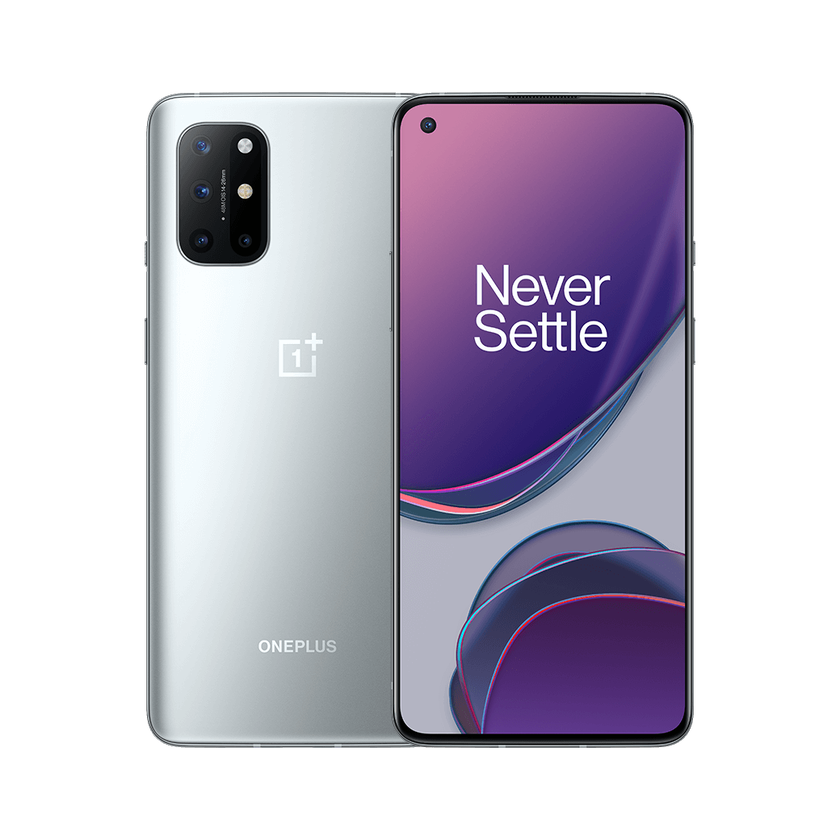
OnePlus 8T
The OnePlus 8T is a worthy upgrade over the OnePlus 8 and is a good option if you're looking for a lower-priced-yet-still-flagship smartphone.
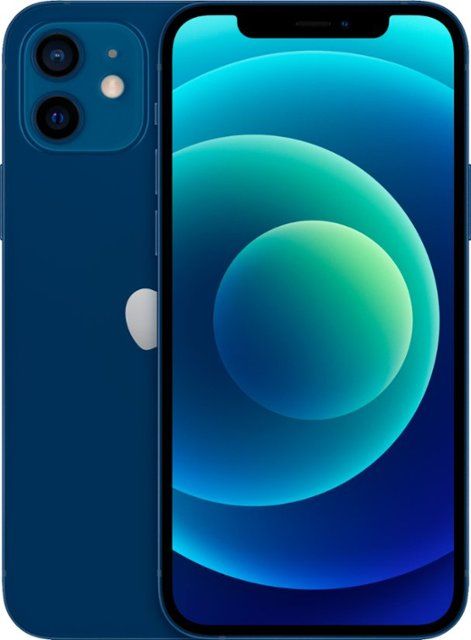
Apple iPhone 12
A highly polished smartphone with arguably the most powerful processor around, with an improved camera system that closes the lead built by Google and Huawei. Arguably the best iPhone for most people right now and the first iPhone that's tempted me to switch from Android.

